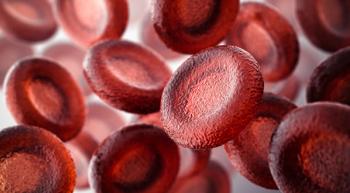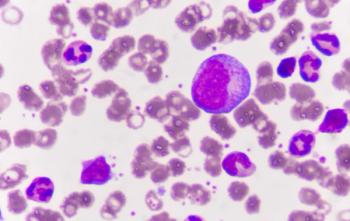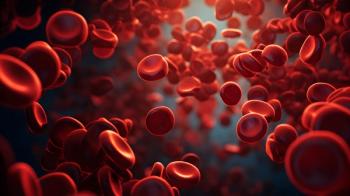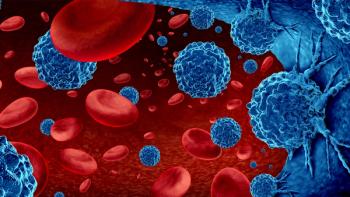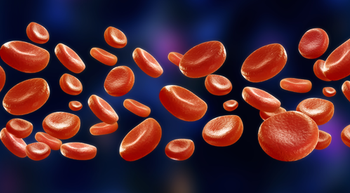
- August 2022
- Volume 16
- Issue 4
FDA Approves Liso-Cel for Second-Line Large B-Cell Lymphoma
The FDA has approved lisocabtagene maraleucel as a second-line treatment for patients with relapsed or refractory large B-cell lymphoma.
The FDA has granted lisocabtagene maraleucel (Breyanzi; liso-cel) approval as a second-line treatment for patients with relapsed or refractory large B-cell lymphoma with primary refractory or early relapse within 12 months of frontline treatment.1
The indication includes patients who have diffuse large B-cell lymphoma (DLBCL) not otherwise specified (including DLBCL arising from indolent lymphoma), high-grade B-cell lymphoma, primary mediastinal large B-cell lymphoma, and follicular lymphoma grade 3B and is specific to patients who have refractory disease to first-line chemoimmunotherapy or relapse within 12 months of first-line chemoimmunotherapy; or refractory disease to first-line chemoimmunotherapy or relapse after first-line chemoimmunotherapy and are not eligible for hematopoietic stem cell transplant due to comorbidities or age.
The regulatory decision was primarily informed by findings from the phase 3 TRANSFORM study (NCT03575351), which showed that the CAR T-cell therapy demonstrated significant clinical improvement over the standard of care for the past 20 years—salvage therapy followed by high-dose chemotherapy plus autologous stem cell transplant.2
The median event-free survival with liso-cel (n = 92) was 10.1 months vs 2.3 months with standard therapy (HR, 0.34; 95% CI, 0.22-0.52, P < .0001). Most patients experienced a complete response with liso-cel (66% [95% CI, 56%-76%]) compared with less than half of those who received standard therapy (39% [95% CI, 29%-50%; P < .0001]). Notably, the median duration of complete response was not reached (NR) among patients treated with liso-cel (95% CI, 7.9-NR).
Furthermore, patients who received liso-cel achieved a progression-free survival double that of standard therapy at 14.8 months vs. 5.7 months, respectively. (HR, 0.41; 95% CI, 0.25-0.66; P = .0001). Most patients receiving liso-cel (97%) received treatment compared with less than half who received high-dose chemotherapy and autologous stem cell transplant (47%).
"[Liso-cel] represents a remarkable advance over a nearly 30-year standard of care, providing significantly improved efficacy with a well-established safety profile,” Manali Kamdar, MD, lead investigator of the TRANSFORM study and associate professor, clinical director of Lymphoma Services, Division of Hematology, Hematologic Malignancies and Stem Cell Transplantation, at the University of Colorado Cancer Center, remarked in a press release. “This important milestone reinforces the benefit of offering a CAR T cell therapy option to patients earlier in their treatment journey and it’s critical that we begin the work to implement this therapy into standard practice as a second-line treatment in order to help improve outcomes for more patients.”
Nurses should note that agent comes with a boxed warning for cytokine release syndrome (CRS) and neurological toxicities.
The rate of incidence of CRS in the TRASNFORM trial was 46% (n = 122), of which 4% was grade 3 or greater (n = 11). One patient died as a result of severe CRS and 2 patients had ongoing CRS at the time of death.
The median onset time was 5 days (range, 1-15). Most cases of CRS resolved (98%) and the median duration time was 5 days (range, 1-17 days), including in those who died on study.
The most common signs of CRS included fever (93%), hypotension (49%), tachycardia (39%), chills (28%), and hypoxia (21%). Other potential indicators of CRS include cardiac arrhythmias (including atrial fibrillation and ventricular tachycardia), cardiac arrest, cardiac failure, diffuse alveolar damage, renal insufficiency, capillary leak syndrome, hypotension, hypoxia, and hemophagocytic lymphohistiocytosis/macrophage activation syndrome.
Patients with active infection or inflammatory disorders should not receive liso-cel. For patients who develop severe or life-threatening CRS, tocilizumab (Actemra), with or without corticosteroids, is the recommended treatment. For this reason, providers should ensure that 2 doses of tociluzmab are available prior to the infusion of liso-cel.
Patients should be monitored for neurologic toxicities, which can occur concurrently with CRS, after CRS resolution, or even in the absence of CRS. Supportive care and corticosteroids are recommended as treatment.
Overall, the rate of neurological toxicity incidence was 35% (n = 95), of which 12% (n = 31) were grade 3 or greater. Three patients died as a result of neurological toxicity and 7 had ongoing toxicity at the time of death.
The median onset time was 8 days (range, 1-46). All neurologic events had an onset time within the 8 weeks following infusion. The median duration was 12 days (range, 1-87), and 85% of cases resolved.
Among patients who experienced neurologic toxicity, 82% (n = 78) also experienced CRS. In 52 patients, the toxicities overlapped.
The most frequent neurological toxicities included encephalopathy (24%), tremor (14%), aphasia (9%), delirium (7%), headache (7%), dizziness (6%), and ataxia (6%). Other serious events such as cerebral edema and seizures may also occur with liso-cel.
For the first week following infusion, patients should be monitored daily at a certified healthcare facility for signs and symptoms of these complications. Monitoring should continue for at least 4 weeks after infusion. Any signs of symptoms of CRS should result in prompt evaluation and treatment.
References
- US FDA approves Bristol Myers Squibb’s CAR T cell therapy breyanzi for relapsed or refractory large B-cell lymphoma after one prior therapy. News release. Bristol Myers Squibb. June 24, 2022. Accessed June 24, 2022.
https://bit.ly/3bvEXUF - US Food and Drug Administration (FDA) accepts for priority review Bristol Myers Squibb’s supplemental biologics license application for Breyanzi (lisocabtagene maraleucel) as a second-line therapy for relapsed or refractory large B-cell lymphoma. News release. Bristol Myers Squibb; February 17, 2022. Accessed June 23, 2022.
https://bit.ly/3Bujynp
Articles in this issue
over 3 years ago
Normalize Palliative Care as Part of the Oncology Treatment Planover 3 years ago
Dispelling Nutrition Myths for Patients With Cancerover 3 years ago
Is a Health Care Price Transparency Revolution at Hand?over 3 years ago
Tackling the Adverse Events of Immunotherapyover 3 years ago
USP <800>: Still a Work in Progress?over 3 years ago
Structured Onboarding Processes Boost Employee RetentionNewsletter
Knowledge is power. Don’t miss the most recent breakthroughs in cancer care.

